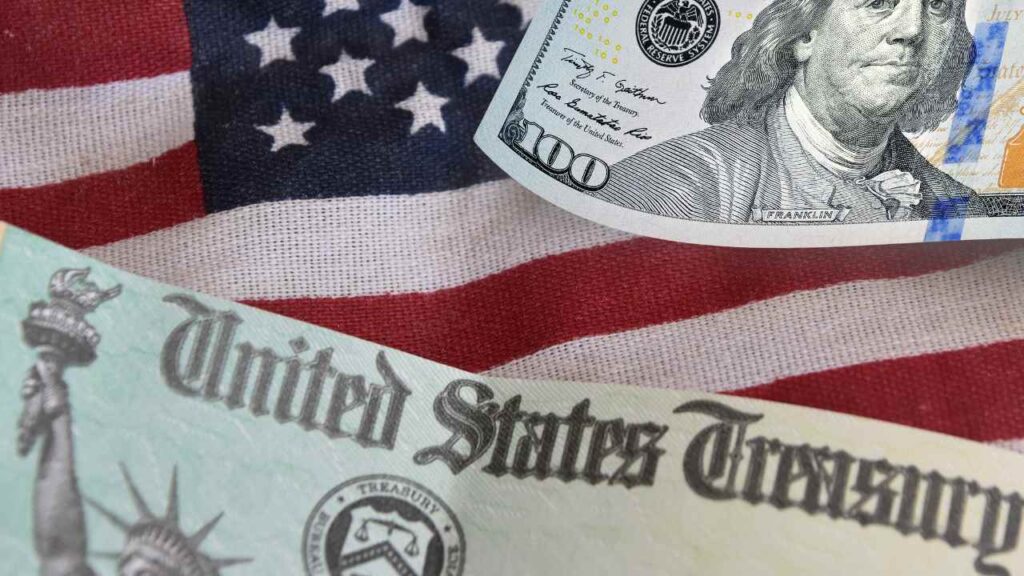It’s the kind of news that hits like a breath of fresh air for everyday Americans buried under bills: the Internal Revenue Service (IRS) has just greenlit bigger tax refunds come 2026. We’re talking real money back in pockets, thanks to inflation tweaks and some bold new tax breaks baked into the “One Big Beautiful Bill Act” (OBBBA), which President Donald Trump inked back in July 2025.
In a year when grocery prices and rent keep climbing, this could mean an extra few hundred bucks in tax refunds—or even thousands—for families scraping by. It’s not just numbers on a form; it’s a lifeline that might just ease the squeeze on household budgets.
Delivers Holiday Cheer Early: 2026 Tax Refunds to Increase
The OBBBA builds on the framework of the 2017 Tax Cuts and Jobs Act, aiming to invigorate economic recovery in the post-pandemic era. After prolonged negotiations in Congress, the legislation emphasizes direct support for middle-income families and workers.
According to tax experts, the updates go beyond standard annual recalibrations to include structural enhancements that extend advantages to parents, older adults, and vehicle purchasers. The IRS outlined these details in its October 9, 2025, revenue procedure, anticipating a meaningful rise in refund amounts when filings begin in early 2026.
Central to these modifications is an increase in the standard deduction, which simplifies tax calculations by allowing a fixed reduction in taxable income without the need for detailed expense listings. For tax year 2026, this deduction rises to $16,100 for single filers and heads of household, and $32,200 for married couples filing jointly: an adjustment of approximately 5.5 percent over 2025 levels to account for inflation.
“This adjustment could reduce the effective tax liability by an additional $500 for a typical household,” observes Sarah Thompson, senior analyst at the Tax Policy Center. Given that roughly 90 percent of taxpayers opt for the standard deduction rather than itemizing, the effect will directly contribute to higher refunds upon processing.
Inflation Bites Less in 2026: Expanded Credits Promise Plumper IRS Payouts
The OBBBA introduces several novel deductions specifically designed for working Americans, effective through 2028, which further amplify the potential for increased returns. One notable provision allows a deduction of up to $2,000 annually for interest paid on loans for qualifying vehicles—those achieving at least 25 miles per gallon in fuel efficiency.
With used vehicle prices having risen by 20 percent since 2023, this measure provides meaningful assistance to individuals financing transportation needs. For seniors, a new credit of up to $1,500 covers unreimbursed medical expenses, such as physical therapy or mobility aids, targeting retirees with moderate incomes.
Cash Flow Boost Incoming: the EITC and CTC Increase
Existing credits also receive significant expansions under the law, broadening their reach and value. The Earned Income Tax Credit (EITC), which supports low- and moderate-income workers, increases its maximum refundable amount to $8,200 for families with three or more children—a 7 percent enhancement.
Similarly, the Child Tax Credit (CTC) advances to $2,300 per eligible child, with income phase-outs adjusted to benefit more middle-class households. A preliminary analysis by JPMorgan Chase suggests these provisions could inject as much as $50 billion into the economy through refunds in 2026, reminiscent of the direct payments issued during the COVID-19 crisis but more precisely allocated.
Are Higher Refunds a Good Idea?
That said, the benefits are not evenly distributed across all income levels. Provisions in the OBBBA phase out or limit eligibility for households with adjusted gross incomes exceeding $150,000, potentially offering less advantage to higher earners.
Critics, including Senator Elizabeth Warren, have described the package as “a veiled subsidy for the automotive sector,” contending that it prioritizes car ownership over investments in public transit. Despite such reservations, a recent Gallup survey indicates that 62 percent of Americans view the reforms favorably, primarily for their immediate impact on family budgets.
To maximize these opportunities, the IRS advises reviewing and updating withholding elections via Form W-4 as soon as possible. “Revising your withholdings now can help align your paychecks more closely with your actual tax obligations, potentially leading to larger refunds,” notes guidance on the agency’s website.
The IRS Interactive Tax Assistant tool offers a straightforward way to estimate personal outcomes. Eligible recipients of the EITC may receive direct deposit refunds as early as February 2026.
